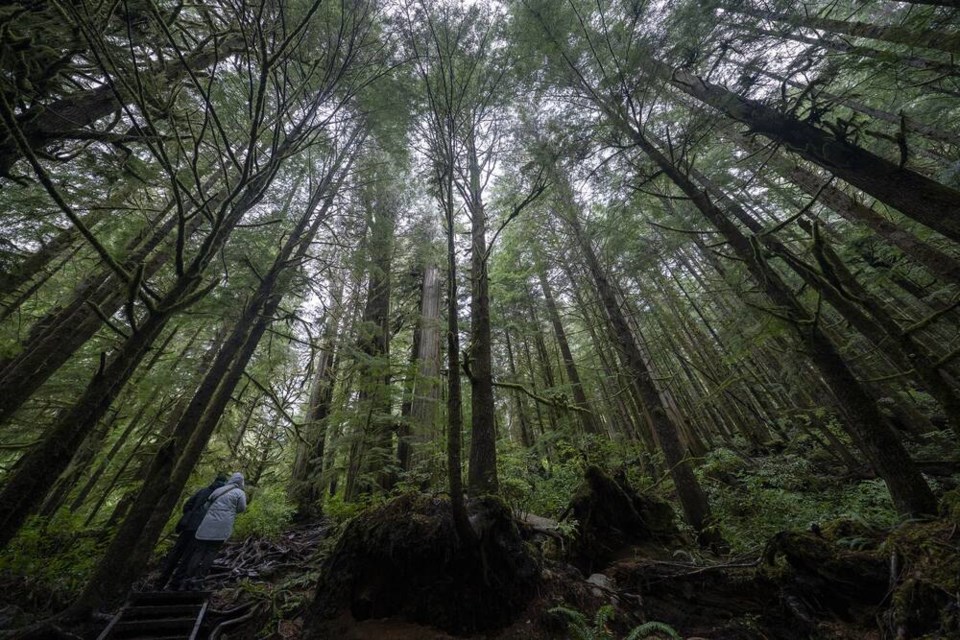Cedar, fir and hemlock trees as old as 800 years have temporary protection after an agreement was reached between four Vancouver Island First Nations and a forestry company.
The deal between four nations in the Nanwakolas Council and Western Forest Products Inc. announced Wednesday will allow for a two-year deferral of logging for 25 square kilometres of rare, ancient and priority old-growth trees.
In November, the government said it would defer the logging of sa国际传媒’s most rare old-growth trees and gave 200 First Nations a deadline to decide if they supported the deferrals or if they thought further discussion was required.
Nanwakolas Council president Dallas Smith said the nations took the first step because the area holds cultural and environmental importance.
“Cedar is the tree of life in our culture,” he said in an interview.
Smith said the nations want to make sure that this tree is preserved for all future generations, he said.
“For animals and birds to call home, to either carve totem poles, build big houses, build canoes, those sorts of things that we’ve sort of taken for granted while we’ve seen the stockpile deplete.”
The First Nations, Tlowitsis, K’omoks, Wei Wai Kum and We Wai Kai, have territory that extends south of Comox Valley up through Port McNeil and into the sa国际传媒 mainland. However, Smith said this agreement only concerns central Vancouver Island.
The agreement is important not only to protect the big trees but the habitat around them because some of the giants left standing alone in a clearcut have later blown down, he said.
The agreement includes preservation of 10 square kilometres of forest identified by a sa国际传媒 government old-growth advisory panel as needing protection. Another 15 square kilometres of priority ancient forests were also deferred through other agreements between the nations and the forestry firm.
First Nations waited for years to ensure that their cultural values were incorporated into discussions about forests and all that they hold, Smith said, adding that came together with the agreement.
“Well, it’s a small start with the 2,500 hectares,” he said.
“We still have other areas within our territory that are going to come under a similar regime.”
Eagles, hawks, ravens, deer, and elk, among other plants and animals, call those forests home, he said.
“Elk habitats very important to us in this discussion. Elk habitats are a big driver for this dialogue for us.”
Forests Minister Katrine Conroy said Wednesday the temporary halt of logging in large sections of old-growth is an important measure giving First Nations and the forest industry time and space to develop long-term strategies.
“A temporary deferral is a step in a long-term partnership and vision for forest management that will benefit local communities and ecosystem health,” she said at a news conference.
Shannon Janzen, Western’s vice-president of partnership and sustainability, said the agreement shows that forest management can be balanced with environmental, social and cultural practices.
Smith said another part of their agreement is that any other harvesting will have to be done after approval with all First Nations communities.
“We do have some trees that we’ve set aside for totem poles or canoes because they take a tree of a certain magnitude to do so,” he noted.
“We’ve identified a few of those within the area that are acceptable to harvest, but we’re really trying to limit and stop the big tree harvesting from our territory.”
The heat dome, floods and forest fires in the province last year highlighted the importance of trees and intact rainforests, Smith said.
The protection ensures that First Nations are helping to mitigate some of the impacts of climate change, while protecting biodiversity, he said.
“So, it’s really important to have this network of protection areas that go up and down the coast so we can make sure we’re doing our part.”



